Is Watermelon a Tropical Fruit? No!
Watermelon is not typically classified as a tropical fruit. It is a vine-like flowering plant originally from a region of Southern Africa, which is not classified as a tropical climate.
Watermelon is grown in various climates ranging from temperate to tropical regions; however, it thrives best in warm, temperate zones.
The plant’s adaptability to different environmental conditions does not necessarily align with the specific requirements of tropical fruits, which are usually native to tropical regions.
Watermelon’s classification is often misunderstood due to its popularity in warm climates and its refreshing taste, which is reminiscent of many tropical fruits. Here are some key points:
While watermelon is a staple in warm weather diets, it does not fit the strict botanical criteria of a tropical fruit.
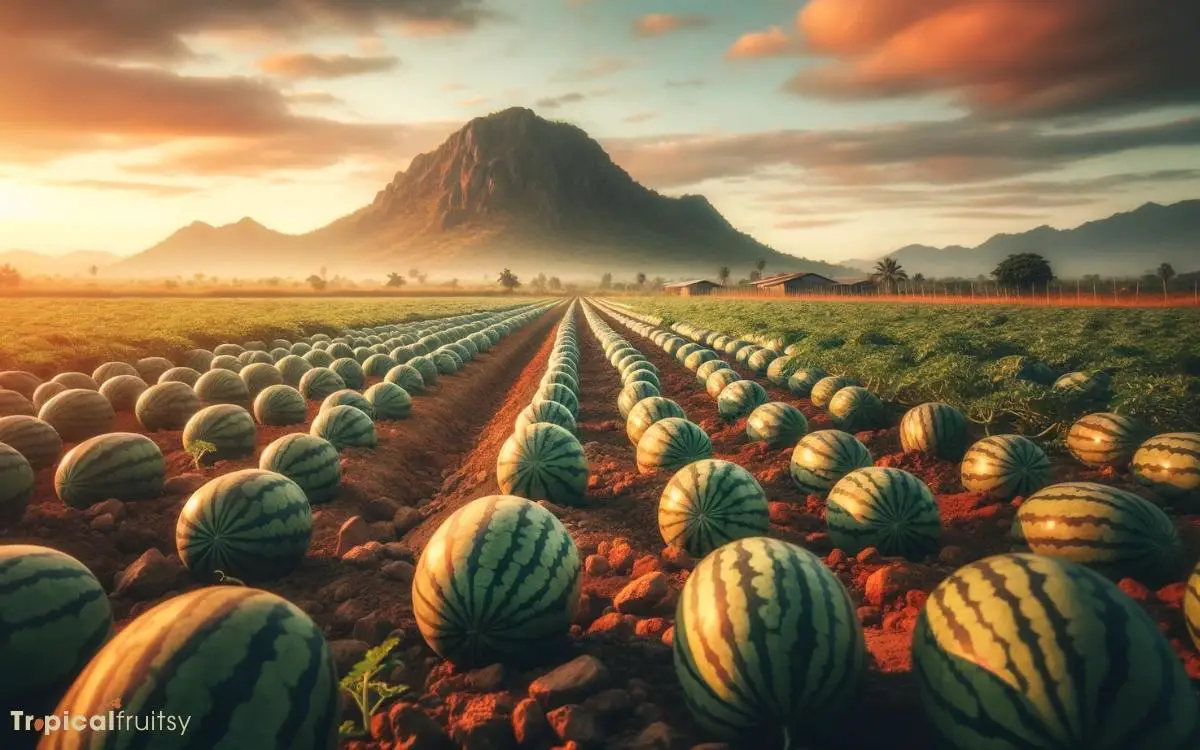
Key Takeaway
4 Criteria: Watermelon and Typical Tropical Fruits
| Criteria | Watermelon | Typical Tropical Fruits |
|---|---|---|
| Botanical Family | Cucurbitaceae | Various (e.g., Anacardiaceae, Bromeliaceae) |
| Origin | Southern Africa | Tropical regions (e.g., South Asia, South America) |
| Climate Zone | Warm, temperate | Strictly tropical |
| Temperature Range | Thrives at 70-90°F (21-32°C) | Often above 70°F (21°C) |
Defining Tropical Fruits
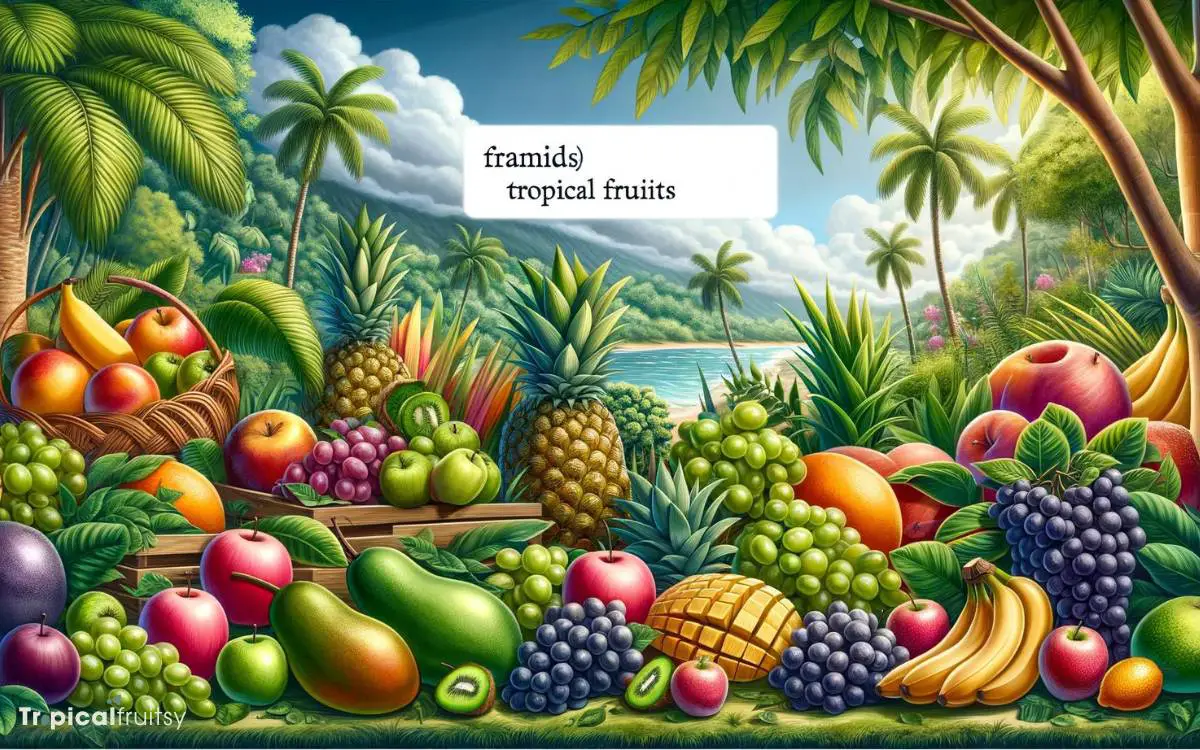
Before addressing the classification of watermelon, it is essential to understand that tropical fruits are those cultivated primarily within the warm climates of the Tropics.
These regions, defined by latitudes between the Tropic of Cancer and the Tropic of Capricorn, exhibit conditions that are particularly conducive to the growth of a diverse range of fruit species.
Characteristically, tropical fruits thrive in areas with ample sunlight, high humidity, and year-round warm temperatures without frost.
Their cultivation and phenological patterns are inextricably linked to these environmental parameters.
Tropical fruits often possess distinctive features, such as bright colors, rich flavors, and high nutrient content, adaptations that have evolved over time in response to their ecological niches.
Understanding these criteria is pivotal when classifying any fruit as tropical.
Watermelon’s Botanical Lineage
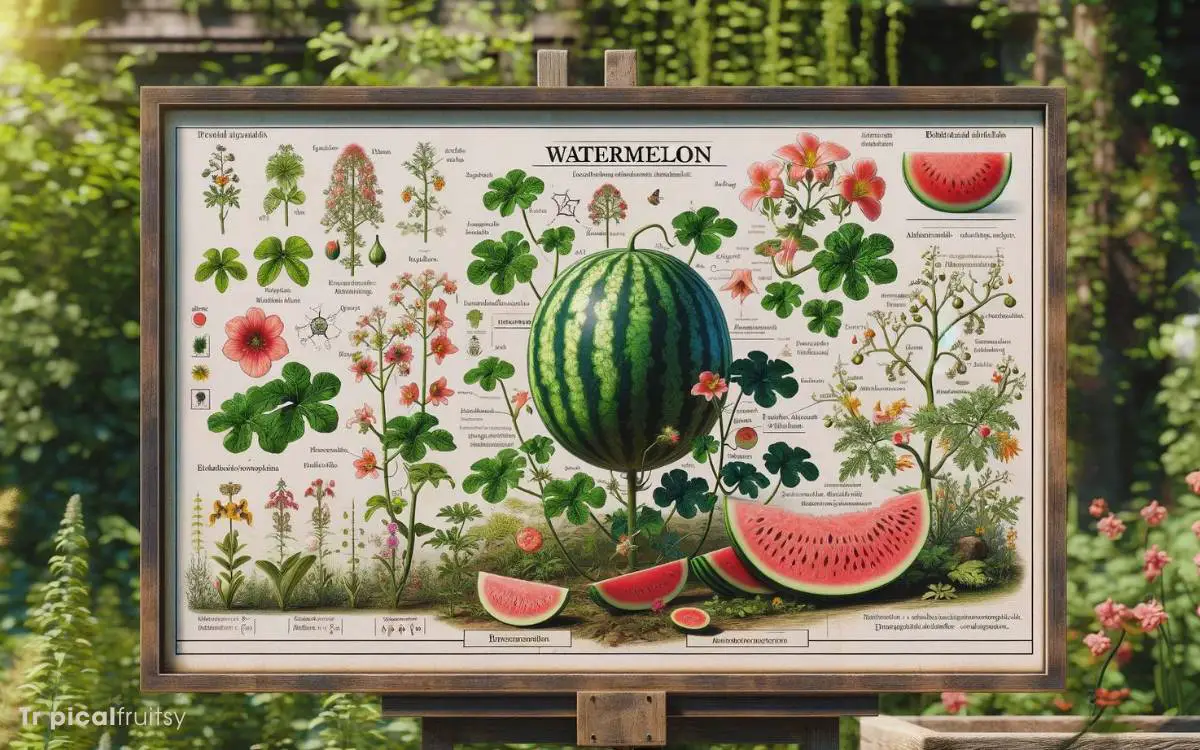
Watermelon (Citrullus lanatus) belongs to the Cucurbitaceae family, which encompasses numerous species often associated with temperate and tropical regions. This family is crucial for both ecological biodiversity and human consumption.
Analyzing watermelon’s botanical lineage reveals the following:
- Genus Citrullus: Watermelon is part of the Citrullus genus, which includes other species such as the bitter apple (Citrullus colocynthis).
- Species Lanatus: The specific epithet lanatus refers to the fine, soft hairs on the plant, a characteristic of this species.
- Origin: Genetic analysis suggests that watermelon’s progenitors originated in Africa, with evidence of its cultivation dating back millennia.
- Domestication: Through selective breeding, humans have transformed the watermelon from a hard, bitter fruit into the sweet and hydrating variety known today.
The precise and technical classification of watermelon underpins its cultural and agricultural significance.
Climate and Cultivation
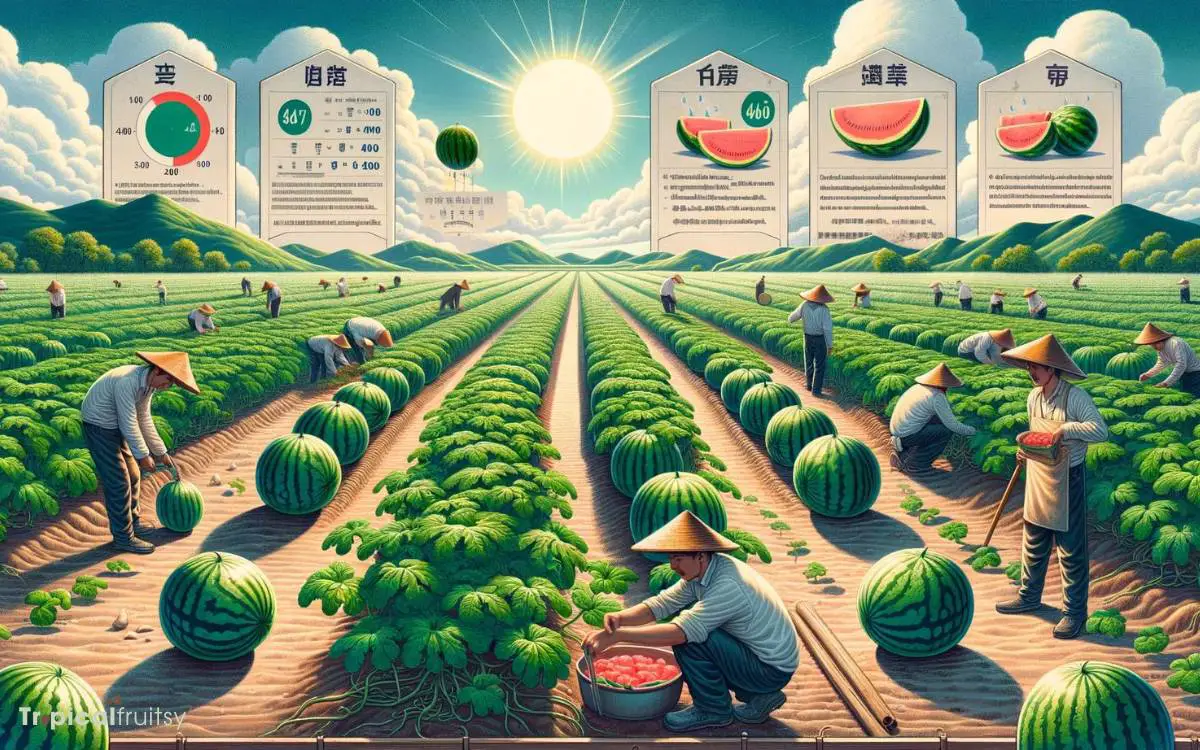
The cultivation of watermelon typically requires warm, temperate to subtropical climates, with sufficient heat and a long growing season to flourish. Optimal growth is achieved with daytime temperatures ranging from 70 to 85 degrees
Fahrenheit and nighttime temperatures not dropping below 50 degrees Fahrenheit. Watermelons demand a frost-free period of at least 80-100 days for proper maturation.
The thermophilic nature of watermelon necessitates soil temperatures to be maintained at a minimum of 60 degrees Fahrenheit for seed germination, thus implicating the need for strategic seasonal planting.
Moreover, irrigation is pivotal for watermelon cultivation; however, overwatering can lead to fruit dilution and increased susceptibility to diseases.
As the nuances of watermelon cultivation are further explored, a comparative analysis with other fruits will elucidate its classification in the broader context of fruit geography.
Comparative Fruit Geography
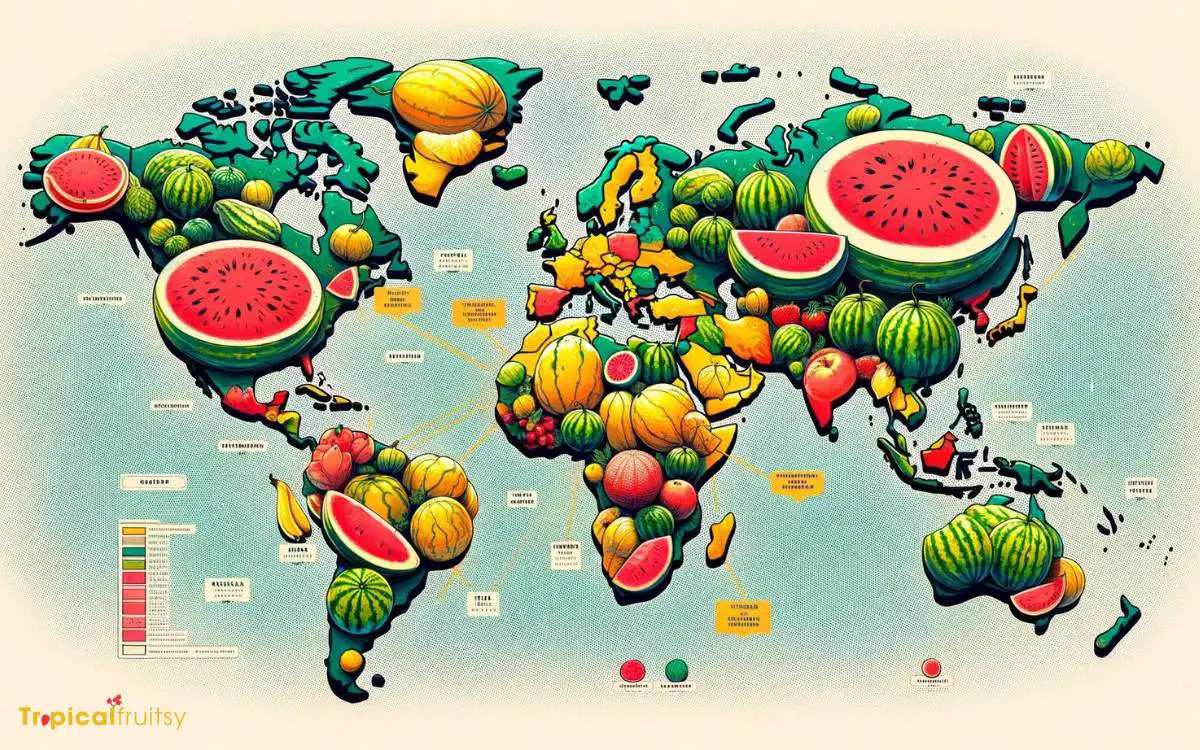
In assessing whether watermelon qualifies as a tropical fruit, it is instructive to compare its environmental requirements with those of fruits indisputably categorized as tropical.
- Temperature Range: Tropical fruits typically thrive in regions where temperatures remain consistently between 20°C to 30°C, whereas watermelons prefer temperatures between 25°C to 35°C.
- Rainfall: Tropical fruits often require high humidity and substantial rainfall, whereas watermelons can tolerate drier conditions and even prosper in semi-arid climates.
- Soil Type: Fruits like mangoes and papayas demand rich, well-drained soils, but watermelons are less picky, growing in a wider range of soil types, including sandy loam.
- Sunlight Exposure: Both watermelons and tropical fruits necessitate full sun, but watermelons are more tolerant of cooler nights.
As we transition to consider ‘the verdict on watermelon,’ these geographic and climatic comparisons will be pivotal.
Is Watermelon Considered a Tropical Fruit?
Watermelon, while often associated with tropical climates, is not considered a tropical fruit. It is actually a member of the gourd family and is native to Africa. Watermelons thrive in warm temperatures and are typically grown in regions with tropical fruit tree preferences.
The Verdict on Watermelon

Given the evidence presented, it becomes clear that watermelons, while sharing some characteristics with tropical fruits, do not fit squarely within this category.
To elaborate, the following table presents a comparative analysis highlighting key distinctions and similarities:
| Attribute | Tropical Fruits | Watermelon |
|---|---|---|
| Climate | Warm, humid | Warm, semi-arid |
| Soil Type | Well-drained, fertile | Sandy, loamy |
| Water Needs | High, consistent | Moderate, drought-tolerant |
| Sun Exposure | Direct, consistent | Full sun, tolerates some shade |
| Harvest Season | Year-round in tropics | Late summer to early fall |
This analytical juxtaposition delineates watermelon’s unique agronomic profile, emphasizing its adaptability to less humid and somewhat cooler climates than those typically associated with tropical fruit cultivation.
Consequently, watermelon should be classified separately, acknowledging its distinct cultivation requirements and environmental preferences.
Conclusion
The watermelon’s subtropical origins and broad cultivation range challenge its strict classification as a tropical fruit.
Analysis reveals that while it thrives in warm climates, its adaptability across temperate zones contradicts a purely tropical identity.
Consequently, watermelon is best described as a fruit of subtropical lineage, with a cultivation footprint that extends well beyond the tropics, reflecting a botanical versatility rather than a singular geographic or climatic niche.






